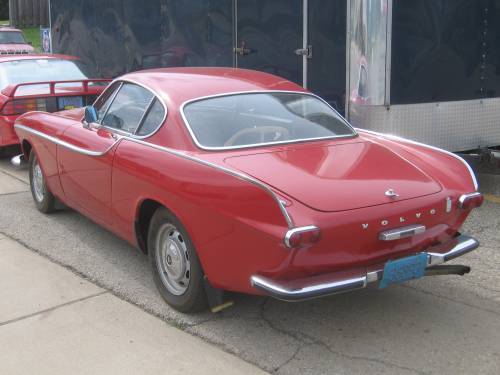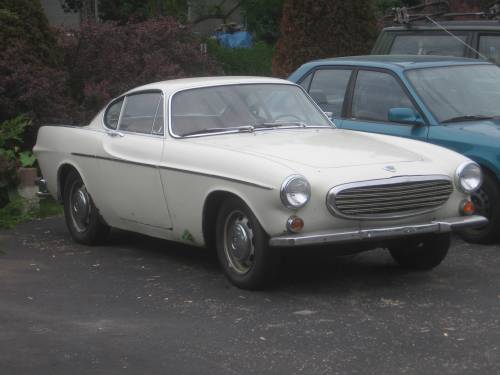
Let's talk about this stylish, curvaceous automobile. That the 1800 ever existed at all seems kind of remarkable. Volvo, the Swedish purveyor of stolid and sedate sedans, was never really known for sports cars or sporting pretensions (a few rally successes notwithstanding). So how did it all come together?
As with everything in the corporate world, the tale ultimately boils down to money.
It seems that the corporate rationale for the 1800 was that it would function as an "image booster:" Something that would drum up attention, get people talking about Volvo, and get buyers into showrooms where they'd ooh and ahh over a P1800 and then drive home in a prosaic 122S sedan. A sports car also allowed Volvo to implement and test new technologies before implementing them on their higher-volume vehicle lines.

The 1800 series debuted as the P1800 and then evolved through incarnations as the 1800S and 1800E, eventually morphing into the 1800ES "shooting brake" wagon by the end. Early cars were built under contract in Britain by Jensen, with production shifting to Sweden two years in. The fundamental styling changed little, although there were periodic trim revisions from year to year and no fewer than five different radiator grille styles. This particular car is a bit of a hodgepodge: It has the correct 1965-66 wire mesh grille and curved side molding, but it also has a pre-1965 cowhorn front bumper. The rear bumper is the correct post-1964 style.

This white 1800S is undoubtedly a 1967 version. It has the busier post-1966 grille pattern and straight side molding, but without the side markers that were required by regulation in the 1968 model year. Both cars were local sightings around Madison.
The 1800E disappeared from the brochures after 1972, with the 1800ES following a year later. The 1950s-penned styling and engineering had run their course, and the American 5-mph bumper requirement was too difficult to implement into the dated design. It never was directly replaced; though Volvo dabbled with luxury coupe versions of the 200, 700, and 850 series as halfhearted successors throughout the 1970s, 1980s, and 1990s.
No talk about the 1800 (in all its incarnations) would be complete without a mention of the two most famous specimens. A white car was piloted by Roger Moore throughout the 1960s as Simon Templar's conveyance in the ITC television program The Saint. And a red 1966 example (almost identical to the one at the top of the post, in fact) holds the record for the most miles driven on any car, with more than 3 million racked up on the odometer over the last 49 years!
The four cylinder-powered 1800 wasn't exactly fast, its seating position in relation to the beltline was quite low, and it didn't handle like a top. But it brimmed with other practical virtues...economy and durability...and was wrapped in one of the most emotive shapes of sheetmetal ever produced. As a final coda, it's worth noting that three-point lap-and-shoulder seatbelts were standard on the P1800 from the beginning of production; seven years before they were required in the US.
Recent Comments